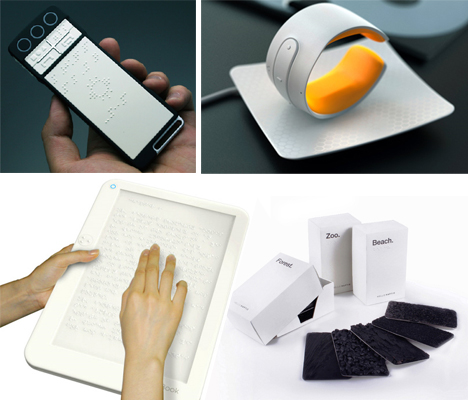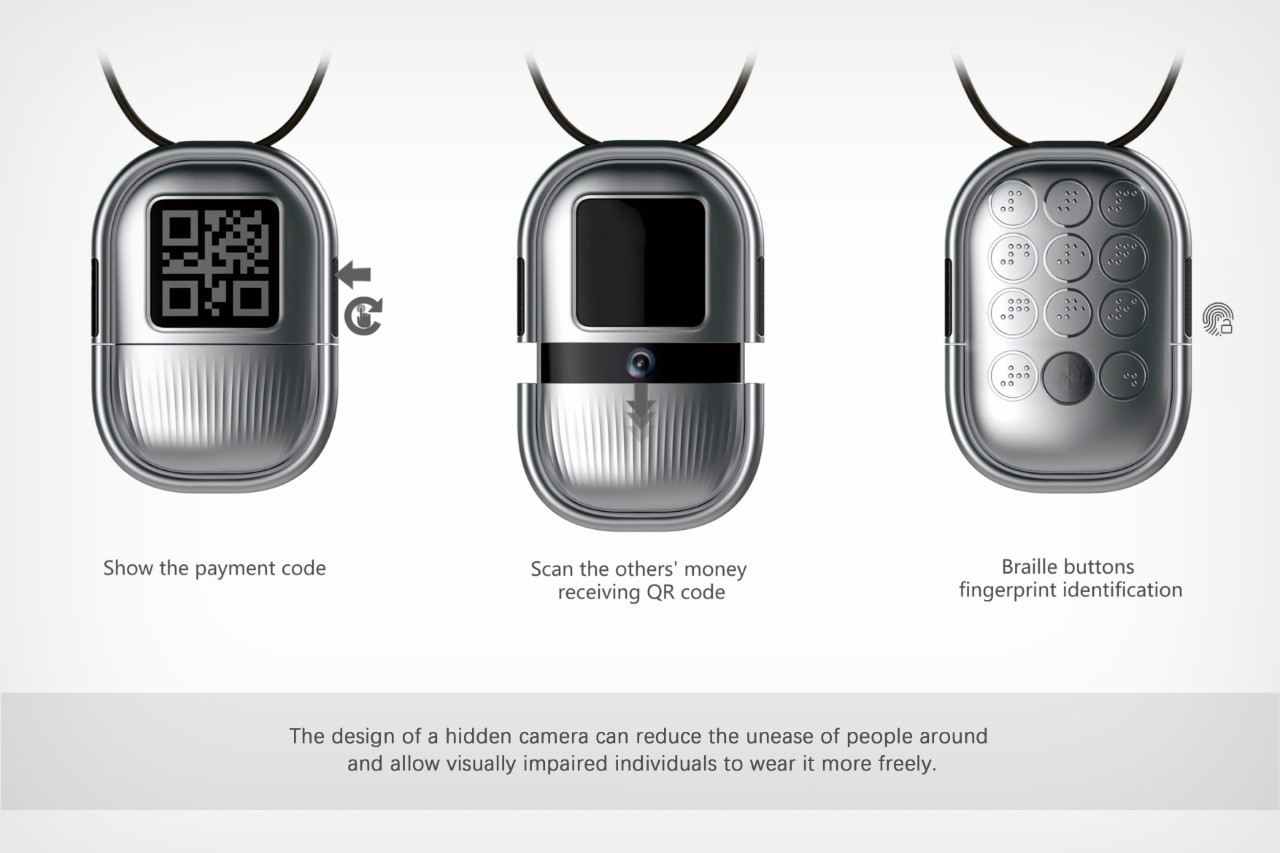OCR Devices for the Blind: Turning Text into Speech with Ease
OCR Devices for the Blind: Turning Text into Speech with Ease
Blog Article
Enhancing Lives With Advanced Assistive Instruments for the Blind
The assimilation of sophisticated assistive tools for the blind is changing just how people experience their surroundings and communicate with their communities. Advancements such as increased fact wise glasses and advanced digital travel aids not just assist in navigating however also boost general quality of life. These technologies promote a feeling of freedom and self-efficacy amongst users, allowing them to take on everyday tasks with newfound self-confidence. Nonetheless, the effects of these improvements prolong past plain performance; they challenge social perceptions of handicap and freedom. What does this advancement imply for the future of assistive modern technology and its function in equipping individuals?
Review of Assistive Devices
Assistive tools for the blind include a diverse array of modern technologies and tools designed to enhance self-reliance and enhance the lifestyle for people with visual problems. These tools provide to different requirements, from navigation and wheelchair to communication and everyday task administration.
One of the main categories of assistive devices includes movement aids, such as white walking sticks and guide pets, which help customers browse their environments safely. Electronic travel help, geared up with sensors and audio comments, likewise play a significant function in movement enhancement.
Furthermore, devices that aid with day-to-day living tasks, such as adaptive cooking area devices, Braille labels, and talking watches, empower individuals to carry out jobs independently. Interaction help, including display viewers and Braille screens, help with access to information and enable people to engage successfully with the digital globe.
Furthermore, low-tech solutions like amplifying glasses and large-print materials continue to be essential for numerous users. Collectively, these assistive devices offer not only as sensible tools however likewise as vital enablers of freedom, cultivating higher engagement in a world that frequently focuses on sighted experiences. Their integration into every day life is important for advertising inclusivity and improving general well-being for those with visual problems.
Cutting-edge Technologies in Usage
Innovation in modern technology has considerably transformed the landscape of tools offered for individuals with aesthetic impairments. Among the most significant innovations are wise glasses integrated with increased reality, which provide real-time navigating aid and object recognition. These tools leverage advanced electronic cameras and synthetic knowledge to supply acoustic hints, boosting the customer's spatial awareness and freedom.
Furthermore, mobile applications have actually arised as effective resources, making it possible for customers to recognize currency, read message aloud, and browse unknown atmospheres via spoken guidelines. Tools such as Braille displays and refreshable Braille gadgets continue to advance, supplying smooth connection with computers and mobile phones, thus boosting interaction and accessibility to info.
Wearable innovation, consisting of smartwatches outfitted with voice-activated attributes, additionally equips individuals by assisting in fast access to alerts and alerts without calling for aesthetic involvement. Responsive maps and 3D printing are additionally acquiring grip, using tangible representations of rooms that help in alignment and mobility training.
Collectively, these cutting-edge modern technologies not just boost the every day lives of aesthetically impaired people yet additionally foster higher self-reliance, inclusivity, and interaction with the wider area, therefore reshaping perceptions of ease of access. (Braille displays and notetakers)
Personal Stories of Empowerment
Empowerment usually arises from individual experiences that highlight the transformative influence of innovation on people with visual problems. Take, for example, the story of Sarah, a young musician that reclaimed her passion for paint via using a wise cane outfitted with challenge discovery. This device not just facilitated her wheelchair but instilled a newfound confidence, allowing her to navigate public areas independently and pursue her imaginative endeavors.

These narratives underscore the extensive impacts that progressed assistive tools can have on life. By making it possible for individuals to get over barriers, modern technology cultivates a sense of freedom and self-worth. Such empowerment stories work as a testament to the possibility of technology, illustrating just how the right devices can substantially enhance top quality of life and open doors to new opportunities for those with visual problems.
Advantages of Advanced Solutions
How can progressed options basically boost the lives of individuals with visual problems? The integration of advanced innovation into assistive gadgets dramatically changes day-to-day experiences for those impacted by vision loss. These innovative remedies supply unprecedented freedom, making it possible for individuals to navigate their atmospheres with self-confidence. Tools such as clever walking canes equipped with sensing units, navigating applications, and strong reading glasses wearable innovation are made to provide real-time feedback, boosting spatial recognition and reducing the threats linked with wheelchair.
Additionally, advanced assistive modern technologies promote social inclusion by assisting in communication and communication. Voice-activated devices and apps enable people to accessibility info and engage with their environments separately, damaging barriers that formerly hindered their involvement in instructional, expert, and social settings.
Furthermore, the personalization and flexibility of these solutions accommodate the diverse requirements of customers, consequently enhancing their overall high quality of life. Enhanced performance, such as object acknowledgment and text-to-speech capacities, empowers people with aesthetic impairments to carry out tasks that they might have as soon as located challenging. Eventually, advanced assistive modern technologies not just improve self-reliance and safety and security however additionally advertise dignity and self-regard, allowing individuals to lead satisfying lives.
Future Patterns in Assistive Tech
As modern technology continues to develop, the landscape of assistive gadgets for the blind is positioned for amazing advancements that will even more boost availability and self-reliance. Arising fads in assistive technology show a shift toward boosted assimilation of expert system (AI) and device understanding, enabling devices to adapt to individual customer requires in real-time. These developments are anticipated to promote more intuitive navigating systems that can determine challenges and give audio feedback, considerably boosting outdoor wheelchair.
In addition, the growth of wearable technology, such as clever glasses equipped with augmented fact, will certainly allow users to get contextual details concerning their environments, thereby improving their spatial understanding. Developments in haptic innovation promise to create responsive comments devices, allowing users to perceive information with touch, boosting knowing site web and communication with their environment.
Telecommunication advances are also paving the means for remote assistance remedies, where skilled experts can offer advice through video phone calls, ensuring assistance is readily obtainable. As these patterns unfold, the future of assistive devices for the blind will definitely cultivate better autonomy, empowering individuals to navigate their globe with confidence and simplicity.

Final Thought
The assimilation of innovative assistive tools for the blind represents a substantial improvement in fostering independence and enhancing top quality of life. By using ingenious technologies, these tools empower individuals to navigate their environments with greater confidence and autonomy. As the area proceeds to progress, recurring research study and advancement will likely produce a lot more innovative options, better changing the lived experiences of individuals with aesthetic disabilities and advertising a higher sense of incorporation within society.
The combination of sophisticated assistive tools for the blind is changing just how individuals experience their surroundings and connect with their areas. The combination of sophisticated technology into assistive tools substantially changes day-to-day experiences for those impacted by vision loss.As technology continues to develop, the landscape of assistive devices this article for the blind is poised for remarkable improvements that will certainly further boost ease of access and self-reliance. Emerging fads in assistive innovation suggest a change toward boosted integration of artificial intelligence (AI) and maker learning, enabling tools to adjust to specific customer needs in real-time.The assimilation of advanced assistive tools for the blind stands for a considerable improvement in promoting independence and improving high quality of life.
Report this page